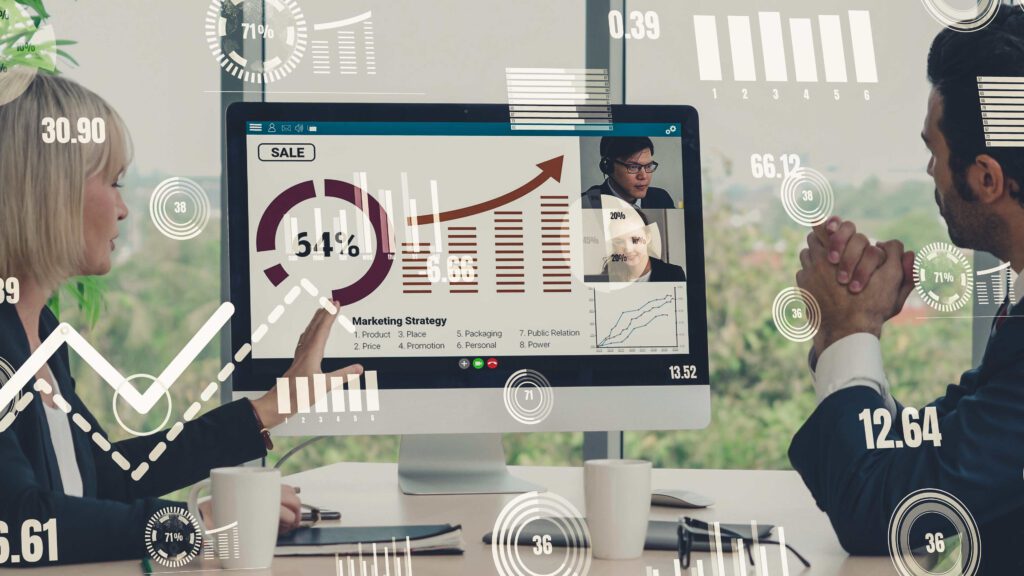Boost Your E-commerce Sales with
Boost Your E-commerce Sales with Effective Digital Advertising Table Of Contents The Importance of Digital Advertising in E-commerce Targeted Advertising
Boost your business with performance marketing strategies that drive measurable growth, maximize ROI, and deliver targeted results.

In the fast-paced and competitive world of business, the ability to effectively market products and services is crucial for success. Performance marketing has emerged as a dynamic and results-driven approach that allows businesses to optimize their marketing strategies, track performance metrics, and achieve tangible outcomes. By leveraging data, technology, and strategic insights, performance marketing offers a powerful framework for businesses to drive growth, engage customers, and maximize their marketing ROI.
This guide will explore the key principles, strategies, and best practices for harnessing the potential of performance marketing to elevate your business to new heights. From data-driven decision-making to personalized customer experiences, from automation and efficiency to continuous learning and adaptation, this guide will provide you with actionable insights and practical tips to help you navigate the complex landscape of performance marketing and unlock the full potential of your business. Let’s delve into the world of performance marketing and discover how you can boost your business to achieve sustainable growth and success.
Understanding performance marketing metrics involves grasping the key indicators that measure the effectiveness of marketing campaigns aimed at driving specific actions or outcomes. These metrics include click-through rate (CTR), conversion rate, return on investment (ROI), cost per acquisition (CPA), and customer lifetime value (CLV). CTR measures the percentage of users who click on an ad or link, while conversion rate tracks the percentage of users who complete a desired action, such as making a purchase or filling out a form.
ROI calculates the profitability of a campaign relative to its cost, while CPA quantifies the cost of acquiring a new customer. CLV estimates the total value a customer brings to a business over their lifetime. Understanding and optimizing these metrics is crucial for maximizing the success of performance marketing efforts.
Performance marketing encompasses a variety of channels, including search engine marketing (SEM), social media advertising, affiliate marketing, and email marketing. By carefully selecting the right channels for their target audience, businesses can maximize their reach and engagement while minimizing wasted ad spend.
Introduction: A brief overview of the importance of selecting the right performance marketing channels.
Transition into discussing factors to consider when choosing channels.
Understanding Your Target Audience: Importance of audience analysis in channel selection.
Techniques for understanding audience demographics, interests, and behaviors.
Overview of Performance Marketing Channels: Introduction to various channels available for performance marketing.
Explanation of pay-per-click (PPC), search engine optimization (SEO), affiliate marketing, email marketing, and social media advertising.
Factors to Consider: Budget considerations for channel selection.
Alignment of channel capabilities with marketing objectives.
Relevance of channels to target audience demographics and preferences.
Track record of success for similar businesses in chosen channels.
Channel-Specific Considerations: Unique advantages and challenges of each channel.
Examples of businesses that excel in specific channels.
Integration and Synergy: Importance of integrating multiple channels for a cohesive marketing strategy.
Strategies for creating synergy between different channels to amplify results.
Testing and Optimization: The role of experimentation in channel selection.
Techniques for testing and optimizing channel performance.
Monitoring and Evaluation: Tools and metrics for tracking channel performance.
Strategies for evaluating ROI and making data-driven decisions.
Case Studies: Real-world examples of businesses effectively leveraging performance marketing channels.
Lessons learned from successful channel selection strategies.

Optimizing your performance marketing campaigns involves several key strategies to enhance efficiency and effectiveness in reaching your target audience and driving desired actions. Here are some essential steps.
Data Analysis: Start by analyzing your campaign data to identify trends, patterns, and areas for improvement. Use analytics tools to track key performance indicators (KPIs) such as click-through rates, conversion rates, and return on investment (ROI).
Audience Segmentation: Divide your audience into segments based on demographics, interests, behavior, or other relevant criteria. This allows you to tailor your messaging and offers to specific groups, increasing relevance and engagement.
Ad Creative Optimization: Continuously test different ad creatives, headlines, and calls to action to identify what resonates best with your audience. A/B testing can help determine which variations perform better and guide future creative decisions.
Keyword Optimization: For search engine marketing (SEM) campaigns, regularly review and refine your keyword strategy. Identify high-performing keywords and eliminate or adjust underperforming ones to improve targeting and cost-effectiveness.
Bid Management: Optimize your bidding strategy to maximize the value of your ad spend. Adjust bids based on factors such as keyword performance, time of day, device type, and audience segment to ensure you’re getting the most out of your budget.
Landing Page Optimization: Ensure that your landing pages are optimized for conversions. Test different layouts, messaging, and calls to action to improve conversion rates and overall campaign performance.
Continuous Monitoring and Iteration: Regularly monitor the performance of your campaigns and be prepared to make adjustments as needed. Stay informed about industry trends, competitor activities, and changes in consumer behavior to stay ahead of the curve.
Performance Tracking and Reporting: Use tracking tools to monitor the performance of your campaigns in real-time. Generate comprehensive reports to evaluate performance against goals and identify areas for further optimization.
Budget Allocation: Allocate your budget strategically across different channels, campaigns, and audience segments based on performance data and ROI metrics. Focus resources on initiatives that deliver the best results and adjust spending accordingly.
Experimentation and Innovation: Don’t be afraid to try new strategies, channels, or tactics to stay competitive and adapt to evolving market conditions. Experimentation can lead to valuable insights and breakthroughs in campaign performance.

Future trends in performance marketing are likely to be shaped by advancements in technology, shifts in consumer behavior, and evolving industry dynamics. Here are some key trends to watch out for
Data-driven Decision Making: As data collection and analysis capabilities continue to improve, performance marketers will increasingly rely on data-driven insights to optimize their campaigns. This includes leveraging artificial intelligence and machine learning algorithms to identify trends, predict consumer behavior, and personalize marketing messages.
Multichannel Attribution: With consumers interacting across multiple channels before making a purchase, there’s a growing need for accurate multichannel attribution models. Future performance marketing strategies will focus on attributing conversions to the appropriate touchpoints along the customer journey, enabling marketers to allocate budgets more effectively and optimize campaign performance.
Personalization at Scale: Consumers expect personalized experiences, and performance marketers will need to deliver tailored messaging and offers at scale. This involves utilizing dynamic content, advanced segmentation techniques, and real-time targeting to deliver relevant messages to individual consumers based on their preferences, behavior, and demographics.
Voice and Visual Search Optimization: With the increasing adoption of voice assistants and visual search technologies, performance marketers will need to optimize their strategies to accommodate these emerging search methods. This includes optimizing content for voice search queries, implementing schema markup for enhanced visibility in visual search results, and exploring opportunities for advertising within voice and visual search platforms.
Privacy and Consent Compliance: As privacy regulations tighten and consumer awareness around data privacy grows, performance marketers will need to prioritize compliance with regulations such as GDPR and CCPA. This involves obtaining explicit consent for data collection and processing, implementing robust data security measures, and being transparent about how consumer data is used.
Integration of Augmented Reality (AR) and Virtual Reality (VR): AR and VR technologies offer immersive experiences that can drive engagement and influence purchase decisions. Performance marketers will explore opportunities to integrate AR and VR into their campaigns, allowing consumers to visualize products in real-world settings or participate in interactive brand experiences.
Influencer Marketing Evolution: Influencer marketing will continue to evolve, with a focus on authenticity, relevance, and long-term partnerships. Performance marketers will collaborate with influencers who align with their brand values and target audience, leveraging their influence to drive conversions and foster genuine connections with consumers.
Sustainability and Ethical Branding: With growing concerns about environmental sustainability and social responsibility, performance marketers will need to align their campaigns with ethical and sustainable practices. This includes highlighting eco-friendly products, supporting social causes, and communicating transparently about the ethical values of the brand.
Overall, the future of performance marketing will be characterized by a combination of technological innovation, data-driven strategies, and a focus on delivering personalized, authentic experiences that resonate with consumers. Keeping abreast of these trends will be crucial for marketers looking to stay ahead in an increasingly competitive landscape.
Embracing performance marketing is essential for driving business growth in today’s competitive landscape. Performance marketing focuses on measurable results, allowing businesses to allocate resources effectively and optimize campaigns based on real-time data.
By leveraging performance marketing strategies, businesses can:
Target the Right Audience: Performance marketing enables precise audience targeting, ensuring that marketing efforts reach the most relevant potential customers. This targeted approach increases the likelihood of conversions and maximizes return on investment (ROI).
Trackable Metrics: Unlike traditional marketing methods, performance marketing provides clear and trackable metrics such as click-through rates, conversion rates, and cost per acquisition. These metrics offer valuable insights into campaign performance, allowing businesses to make data-driven decisions and refine their strategies for better results.
Cost-Efficiency: Performance marketing operates on a pay-for-performance model, where advertisers only pay when specific actions, such as clicks or conversions, are achieved. This cost-effective approach eliminates wasted spending on ineffective channels and ensures that marketing budgets are allocated toward activities that yield tangible results.
Flexibility and Agility: In rapidly evolving markets, businesses need to adapt quickly to changing trends and consumer behaviors. Performance marketing offers the flexibility to adjust campaigns in real-time based on performance data, allowing businesses to stay ahead of the competition and capitalize on emerging opportunities.
Enhanced ROI: By focusing on driving measurable outcomes, performance marketing delivers a higher return on investment compared to traditional marketing methods. Businesses can optimize their campaigns to maximize ROI, achieving greater efficiency and effectiveness in their marketing efforts.
In today’s digital landscape, performance marketing has emerged as a powerful tool for businesses to drive growth, engage customers, and achieve measurable results. By leveraging data-driven strategies and innovative technologies like artificial intelligence (AI), organizations can optimize their marketing efforts and stay ahead of the competition.
The key to success lies in adopting a holistic approach to performance marketing that encompasses data analysis, personalization, optimization, and continuous learning. By collecting and integrating data from various sources, businesses can gain valuable insights into customer behavior and preferences. AI-powered tools can then be leveraged to segment audiences, deliver personalized experiences, and predict campaign outcomes with greater accuracy.
Automation and efficiency are also critical components of successful performance marketing. By automating repetitive tasks and streamlining workflows, businesses can free up resources to focus on strategic initiatives and deliver better results. AI-powered lead scoring and predictive analytics can help prioritize high-potential prospects and optimize resource allocation for maximum impact.
As the performance marketing landscape continues to evolve, businesses must be willing to adapt and innovate. Fostering a culture of experimentation and continuous learning is essential for staying ahead of the curve and capitalizing on emerging trends and technologies. By embracing a data-driven, customer-centric approach and leveraging the power of AI, businesses can unlock new opportunities for growth and success.
Performance marketing offers a powerful path for businesses to boost their growth, engage customers, and drive measurable results. By implementing the strategies and best practices outlined in this guide and continuously investing in innovation, businesses can position themselves for long-term success in the dynamic world of digital marketing.
Performance Marketing Focus Performance marketing is more focused on measurable outcomes and quantifiable results, often utilizing digital platforms for targeted advertising and tracking ROI.
Traditional Marketing Approach Traditional marketing relies on tangible touchpoints like print ads, physical materials, and TV commercials to reach a broad audience without the same level of precise tracking as performance marketing.
Different Marketing Objectives Performance marketing aims for specific conversions and actions, while traditional marketing often focuses on brand awareness and reaching a wider, less targeted audience.
Key Performance Metrics Common metrics used in performance marketing include Impressions, Clicks, Click-Through Rate, Conversions, Conversion Rate, Cost Per Click, ROI, and Customer Lifetime Value.
Digital Marketing KPIs In performance marketing, metrics like Brand Awareness, Engagement Rate, Website Traffic, and Social Media Performance play a crucial role in measuring campaign effectiveness.
Tracking Ad Campaigns To evaluate the success of ad campaigns, Performance Marketers track specific metrics like Impressions, Clicks, Conversion Rate, Cost Per Click, and prove the value of their initiatives.
Top Performance Marketing Channels Performance Marketing utilizes various key channels such as affiliate marketing, social media advertising, search engine marketing (SEM), content marketing, email marketing, and influencer partnerships to drive conversions and ROI.
Types of Performance Marketing Channels Businesses looking for effective results often leverage digital platforms including websites, social media, email, SEO, PPC, content marketing, and affiliate marketing to maximize the impact of their performance marketing strategies.
Businesses can optimize their campaigns by testing different ad creatives, targeting parameters, and landing pages, and analyzing the results to make data-driven decisions.
Businesses can get started by defining clear goals, identifying their target audience, selecting the right channels, and allocating sufficient resources for testing and optimization.
Boost Your E-commerce Sales with Effective Digital Advertising Table Of Contents The Importance of Digital Advertising in E-commerce Targeted Advertising
Top SEO Marketing Strategies to Skyrocket Your Website Traffic Table Of Contents Keyword Research and Optimization Content Quality and Quantity
The Ultimate Guide to SEO Marketing: Boost Your Online Visibility Table Of Contents Introduction What is SEO Marketing? Why is
How to Run a Successful Performance Marketing Campaign Table Of Contents Introduction Define Your Goals Identify Your Target Audience Choose
Optimizing Your Digital Advertising : Best Practices for 2024 Table Of Contents Introduction Embrace AI and Machine Learning in Digital
Accessibility: If you are vision-impaired or have some other impairment covered by the Americans with Disabilities Act or a similar law, and you wish to discuss potential accommodations related to using this website.